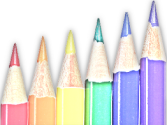Kitchen Science Experiments
Kitchen Science Experiments
We can learn a lot from science, and have fun, too! We've put together a bunch of science projects that your middle school student can do right in your own kitchen, using material you probably already have around the house. So, with proper supervision, here are some great resources on kitchen science experiments:
· Create Your Own Slime: A kitchen experiment in making your own slime. Using Borax powder, glue, water, food coloring, two bowls, a spoon, and a Zip Loc bag create a batch of homemade slime in your kitchen.
· Construct Your Own Periscope: With just milk cartons, tape, a pencil, a ruler, small mirrors, and a utility knife you can help your child construct his or her own periscope.
· Fog in a Bottle Experiment: Using a clear bottle, ice, hot water, and Isopropyl alcohol a mysterious homemade fog can be created with this experiment.
· An Experiment with Baking Soda: Try this experiment that uses vinegar, baking soda, and film canisters to cause the lids to pop off of their containers! In addition, there is a putty experiment that involves liquid starch and glue.
· A Balloon Experiment: Watch what happens when a balloon is placed over the opening of a bottle that recently contained hot water.
· Balloon in a Bottle Demonstration: The idea behind this scientific demonstration is to try to blow up a balloon when it is placed inside a plastic bottle.
· An Easy Egg Experiment: Observe and record the changes in an egg when it is placed in vinegar.
· Bottle Blob Project: Make your own colorful lava lamp with simple ingredients found in your kitchen.
· A Selection of Experiments: Several experiments are explained including how to make a floating boat out of an index card and a scientific challenge using a potato.
· Fun Experiment with Soda Cans: This experiment solves the question of whether particular types of filled soda cans float when placed into a container of water. The answers are surprising.
· Egg Spinning Experiment: Learn how to tell whether an egg is cooked or raw by way of this kitchen experiment. Invite a friend over to watch the demonstration.
· The Bread Goo Project: This experiment teaches a student about chemistry through the creation of bread goo.
· Bobbing Raisins: An intriguing kitchen experiment using these simple materials: raisins, a jar, and a carbonated drink.
· An Experiment with Color: An activity on the mixing of colors that involves milk, glue, food coloring, dish detergent, and disposable cups.
· Simple Science Experiments: A variety of easy-to-understand projects to choose from such as the ice cube experiment and the celery experiment.
· Soda Bottle Volcano Experiment: Experience the power of a homemade volcano made out of a two liter plastic soda bottle.
· A Yeast Experiment: Observe how a mixture of yeast and sugar makes a balloon inflate on top of a bottle.

